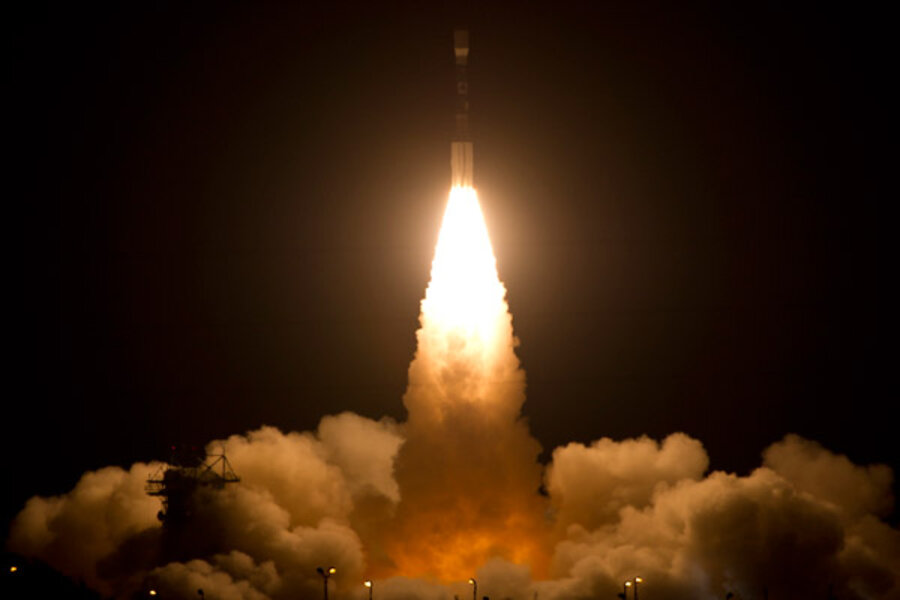New satellite launches: Will it improve weather forecasts?
Loading...
A prototype for a new generation of weather satellites successfully launched from Vandenberg Air Force Base in California in the predawn hours Friday morning.
The $1.5 billion, SUV-sized craft carries five instruments that will monitor 30 features in the atmosphere, on land, and in the ocean that affect daily and seasonal weather patterns, as well as long-term climate behavior.
Known by its acronym NPP, the 2.3-ton craft is designed to orbit Earth around its poles 14 times a day to provide its measurements in virtually unprecedented detail. Four of the five instrument packages aboard the craft are traveling to space for the first time, although prior craft have carried hardware that has measured similar climate parameters.
The craft is unique in that it is the first satellite designed to satisfy the needs of weather forecasters and climate researchers simultaneously, project officials say.
"NPP will help improve weather forecasts, enable unique scientific insights, and allow more-accurate environmental predictions," says Michael Freilich, who heads the Earth Science Division at the National Aeronautics and Space Administration.
The craft, which is serving as a test bed for the four new instrument packages and for the ground-based network to handle the enormous volume of data the craft will deliver each day, will be vital to meeting the National Oceanic and Atmospheric Administration's goals of boosting the accuracy and lead time for weather forecasts – especially those involving severe weather, according to Mitch Goldberg, who heads the agency's satellite meteorology and climate effort.
In addition, the NPP satellite is serving as a bridge between three of NASA's Earth-observing satellites and one of NOAA's polar-orbiting weather satellites, says NASA spokesman Steve Cole.
Especially for long-term climate studies, long-duration measurement records are invaluable. The three NASA research satellites – Terra, Aqua, and Aura – are performing well. But they are operating well beyond their original design lives.
NPP's overlapping presence on orbit allows researchers to cross-calibrate measurements common to all the craft so that when NASA does pull the plug on the veterans, data are compatible across the two generations of satellites.
The NPP satellite, formally known as the NPOESS Preparatory Project satellite, is the forerunner to a pair of advanced weather-and-climate satellites that NASA and NOAA plan to launch, one in 2016 and the other in 2019.
The pair represent a scaled-back version of a six-satellite fleet originally envisioned under what was known as the National Polar-orbiting Operational Environmental Satellite System. The project's goal was to deliver a fleet of advanced weather-and-climate satellites that would meet the Pentagon's needs, as well as those of NASA and NOAA.
But cost overruns, delays, and mismanagement prompted an overhaul of the project last year.





